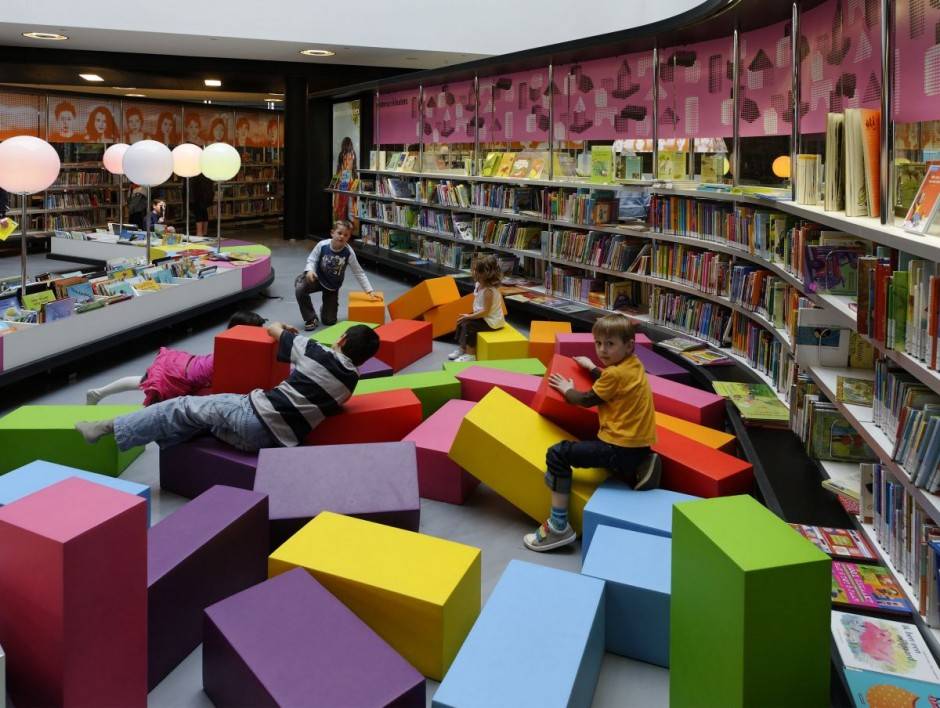R.J. Palacio's best-selling novel "Wonder" was born in a moment of panic. She was getting milkshakes with her two sons in Brooklyn when she saw a little girl with a severe facial deformity. She rushed her sons away as her three-year-old began to cry. She instantly regretted it, and wished she'd stayed to talk to the girl. That night, she scribbled the first sentence of a novel on a Post-it Note: "My name is Ian. To me, I'm an ordinary kid."
She wrote the novel—the story of a 10-year-old boy with a horrible facial disfigurement who struggles to fit in—with a middle-school reader in mind, because her oldest son was that age. "I wrote something I thought a fifth-grader would like, with short chapters, lots of action, sentences that weren't too complicated," she says.
But after the novel was released in February 2012, in a bright, cartoonish hardcover edition clearly aimed at 8- to 12-year-olds, something unexpected happened. Prominent adult novelists, including Emily Giffin and thriller writer Brad Meltzer, heaped praise on the book and urged their fans to read it. Fan mail began pouring in from adult readers, not only from parents and teachers who embraced the book's anti-bullying message, but from single people who found the narrative sophisticated and moving. In the U.K. and five other countries, publishers released adult editions of the novel. "Wonder" shot to the top of the best-seller list and has hovered there for nearly two years, selling more than a million copies.
Fans of "Wonder" say it defies categorization. "To look at 'Wonder' and say that's a book for young readers is a complete disservice," said Mr. Meltzer, who recommended the title to his 35,000-plus Twitter followers. "To me, a good book is a good book."
Middle-grade books have become a booming publishing category, fueled in part by adult fans who read "Harry Potter" and fell in love with the genre. J.K. Rowling's books, which sold more than 450 million copies, reintroduced millions of adults to the addictive pleasures of children's literature and created a new class of genre-agnostic reader who will pick up anything that's buzzy and compelling, even if it's written for 8 year olds. Far from being an anomaly, "Harry Potter" paved the way for a new crop of blockbuster children's books that are appealing to readers of all ages. Recent hits include Rick Riordan's mythology-tinged fantasy books, which have sold have sold some 35 million copies; Rachel Renee Russell's "Dork Diaries," which has 13 million copies in print; and Jeff Kinney's "Diary of a Wimpy Kid," which has sold more than 115 million copies. The eighth and latest book in Mr. Kinney's series, "Hard Luck," which came out last month, sold more than a million copies in its first week, and had a massive first printing of 5.5 million copies. It's currently No. 1 on Amazon and tops The Wall Street Journal's fiction best-seller lists.
"People don't think of it as reading down anymore," says Seira Wilson, children's and teen-books editor at Amazon. "There's less of a stigma."
The growing appeal of children's literature reflects a broader cultural shift as the taste gap between generations collapses. Pop culture today—from frothy hit songs to clever Pixar movies—increasingly caters to both parents and kids. Hip urban parents ride skateboards, play videogames and eat gourmet Popsicles, while their children check their cellphones and sport skinny jeans. Rock bands like They Might Be Giants and Bare Naked Ladies have released children's albums. The Sundance Film Festival recently announced that it will start screening children's movies "to reach our youngest independent-film fans." It's no wonder that parents and children who watch the same TV shows, listen to the same bands and wear the same clothes have similar taste in literature.
"It used to be that kids would emulate what their parents were reading, and now it's the reverse," said David Baldacci, a best-selling crime novelist who will release a new middle-grade fantasy novel with Scholastic next spring. "A lot of the most interesting work in fiction is coming out of that genre."
Mr. Baldacci is one of several big-name authors who are angling to get in on the action. Blockbuster novelists like John Grisham and James Patterson have launched children's books series in recent years to extend their reach, often bringing their adult fans along with them. (Mr. Grisham jokingly said that he created his "Theodore Boone, Kid Lawyer" character after Harry Potter knocked him off his usual No. 1 spot on the best-seller list.) Commercial juggernaut Mr. Patterson recently launched a new middle-grade series, "Treasure Hunters," and will add another, "House of Robots," next year, further expanding his line of books for young readers, which have sold 27 million copies and now include seven series. Mr. Patterson says he prefers writing kids books to "murdering people on my pages."
Neil Gaiman, author of best-selling adult fantasy books like "American Gods," says he's often surprised, and slightly chagrined, when adults read his children's books. This fall, at a London reading of his best-selling middle-grade book, "Fortunately, the Milk," he was unnerved to see that the crowd of 2,500 people was mostly adults. The illustrated book features dinosaurs, pirates and aliens. Sometimes, he gets mail from grown-ups who read not just his young-adult books, but his picture books for very young readers. "Occasionally I feel like apologizing to them," Mr. Gaiman said. "You see these reviews on Amazon for 'Chu's Day,' a book really aimed at kids that can't quite read yet, that say, 'I'm a big fan of Mr. Gaiman's novels but I found this a little thin.' "
Some children's-book authors are deliberately shaping their books for adults. Mr. Kinney, author of the mega best-selling series, "Diary of a Wimpy Kid," said he first envisioned his illustrated books about a middle-school kid named Greg as wry cartoons for adults. His first draft was 1,300 illustrated pages. His publisher, Abrams, convinced him to target kids, arguing that the sassy young narrator would appeal to children, and adults would follow. Mr. Kinney was skeptical at first. He thought kids might miss the fact that his protagonist, Greg, is an unreliable narrator (not to mention a bad role model). But it proved a savvy move. "The books have found a much bigger readership by going through the kids," Mr. Kinney says.
Mr. Kinney says he still writes for adults, and is often surprised to see children at his public appearances. "I'm so focused on the adult reader that it's always a strange thing for me to get out on the road and meet lots of kids," he said.
Children's books have evolved in recent years to meet the tastes and expectations of multigenerational audiences. Many children's book covers have gotten more muted and mature looking—better for the self-conscious adult reader to pull out on the bus or subway. The stories themselves have grown longer and more complex. "The House of Hades," the fourth installment Mr. Riordan's "Heroes of Olympus" series, is nearly 600 pages long. The first four books in his series weigh in at around 2,300 pages, which makes C.S. Lewis's seven-book epic, "The Chronicles of Narnia," seem relatively slim at around 1,400 pages.
Middle-grade authors are tackling tougher and more realistic themes, making their works appealing for adult book clubs. Sharon Draper's best-selling middle-grade novel "Out of My Mind" is narrated by a paralyzed girl with cerebral palsy. In "Counting by 7s" by Holly Goldberg Sloan, a 12-year-old genius struggles to cope after her parents die in a car accident. "Wonder" took off as a crossover hit in part because it deals with bullying and life-threatening disorders, themes that made it a popular title with book clubs, teachers and librarians.
"The quality of the literature for children out there is just astounding," said Erin Clarke, an editor at Knopf Books for Young Readers, who edited "Wonder." "It's been that way for a long time, but the general population is just realizing it."
In an entertainment landscape where hits often come and go in a flash, the word-of-mouth sensation "Wonder" is developing the aura of a classic. E-book sales were up nearly 150% in 2013 over 2012, suggesting a growing adult audience.
R.J. Palacio's real name is Raquel Jaramillo. She lives on the first floor of a brownstone in Park Slope, Brooklyn, with her husband, their two sons, Joseph, 9, and Caleb, 17, and their two rescue dogs. She used her mother's maiden name as a pen name to avoid awkwardness at work. Ms. Jaramillo has worked in publishing for more than 20 years, as an art director at Henry Holt and then as the director of children's books at Workman Publishing. Her husband is the executive art director at Simon & Schuster Children's Books. She knew many of the editors at major children's-book imprints and didn't want to appear to be cashing in on her connections.
Ms. Jaramillo, 50, started writing "Wonder" six years ago, right after she saw the disfigured girl in the ice-cream store. "I obsessed about it all day," she says. With two kids and a full-time job, she had little time to write, so she would wake up at midnight and write until three in the morning. She kept her odd nocturnal schedule for a year, working in a cluttered walk-in closet that serves as her home office.
"Wonder" opens as Auggie prepares to enroll in a Manhattan private school, after years of being home-schooled. He is devastated when he overhears his classmates making cruel remarks about him. "I won't describe what I look like. Whatever you're thinking, it's probably worse," he says in the book's opening pages. The novel alternates between Auggie's narration and the confessions of those around him, including his big sister, Via, and his friends, Jack and Summer.
Bits of Ms. Jaramillo's life wound up on the page: the adoption of a dog named Bear, her mother's sudden death in the middle of the night, her job (Auggie's mother is a former children's book illustrator). She re-created the ice-cream store incident from Jack's point of view, as Jack remembers gasping in alarm when he first saw Auggie in front of an ice cream store when they were both 5.
"Wonder" wasn't an easy sell at first. Ms. Jaramillo's literary agent, Alyssa Eisner Henkin, says several publishers rejected the manuscript because they worried it would only appeal to a "special needs" niche. Knopf bought it and had modest expectations, printing just 22,500 copies in February 2012.
The audience proved much broader than anyone imagined. The novel has gone through 38 reprints, selling more than a million copies. Foreign rights sold in 36 countries, and six publishers overseas released adult editions of "Wonder." Requests for an author appearance poured in from schools, libraries and book clubs. Ms. Jaramillo is working on a spinoff to "Wonder," which will distill the novel's message into a book of precepts.
Lions Gate optioned the film rights and hired a screenwriter to adapt it. Impatient fans who can't wait for the film have already taken to YouTube with their own amateur movies based on the book.
A few months ago, Knopf released a collector's edition of "Wonder" that includes 10 pages of fan letters, emails and cards, many from adults. "I've now joined the increasing legions of grown men reduced to tears," a man named Nick Langley wrote. Another note came from Rosalind Gordon, a 91-year-old woman from Connecticut who emailed the author to say that the book brought back memories of being taunted in a lunchroom more than 77 years ago. "I understand what Auggie felt," she wrote. "I had no scars, but I was a skinny, vulnerable teenager."
Must-Reads for 8- or 80-Year-Olds
A sampling of books written for kids that adults will love too.Flora & Ulysses
Kate DiCamillo
A quirky story about Flora, a cynical 10-year-old girl who befriends a squirrel with superpowers, including the ability to write poetry.
Navigating Early
Clare Vanderpool
At the end of World War II, two boys set out on the Appalachian Trail in an
adventure tale reminiscent of 'Huckleberry Finn.'
adventure tale reminiscent of 'Huckleberry Finn.'
Holly Goldberg Sloan
A 12-year-old genius and outsider counts by
sevens to cope with her parents' sudden death in
a car accident.
sevens to cope with her parents' sudden death in
a car accident.
Sharon Draper
A wrenching novel
narrated by a smart,
perceptive wheelchair-bound 11-year-old girl with
cerebral palsy.
narrated by a smart,
perceptive wheelchair-bound 11-year-old girl with
cerebral palsy.
from: Wall Street Journal









